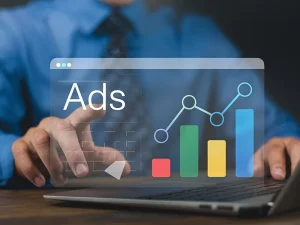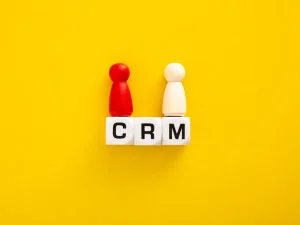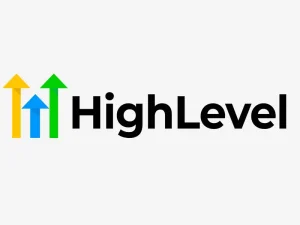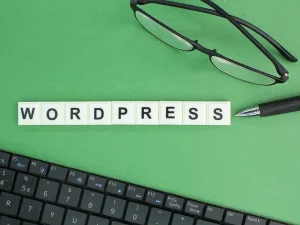Welcome to the world of landing pages, where first impressions mean everything and conversions are the name of the game. A well-crafted landing page can be your ticket to online success in today’s digital landscape. But what exactly is a landing page, you ask? Well, buckle up because we’re about to take you on a journey through the ins and outs of creating a winning landing page that will leave your visitors begging for more!
Picture this: You’ve spent countless hours brainstorming ideas for your website, perfecting every detail from color schemes to logo designs. Your product or service is top-notch and ready to make waves in the market. Now comes the crucial moment when potential customers stumble upon your site – how do you ensure they stick around long enough to become paying customers?
That’s where an effective landing page comes into play. Unlike other pages on your website that serve multiple purposes (such as providing information or showcasing products), a landing page has one singular goal: conversion. Whether capturing leads, driving sales, or promoting an event, a well-designed and targeted landing page can make all the difference.
But hold on just a second! Before diving headfirst into building your dreamy destination for high-converting traffic, there are some key factors you need to consider. First and foremost, who is your target audience?
In our next blog section (Identifying Your Target Audience).
Understanding the Purpose of a Landing Page
When building a successful online marketing campaign, understanding the purpose of a landing page is crucial. A landing page is a standalone webpage specifically designed to capture the attention of your target audience and encourage them to take a desired action. Whether you want visitors to sign up for your newsletter, download an ebook, or make a purchase, your landing page serves as the gateway to achieving those goals.
The primary purpose of a landing page is conversion. Unlike other pages on your website that may serve multiple purposes and cater to various types of visitors, a landing page focuses solely on driving conversions. Creating a clear and compelling call-to-action (CTA) and removing any distractions or unnecessary elements from the page can increase the likelihood that users will convert.
Another important aspect of understanding the purpose of a landing page is its ability to provide relevant and targeted information. Your landing page should align with your marketing campaign or advertisement that directed users there in the first place. This ensures continuity in messaging and allows for clarity for visitors expecting specific content or offers.
Additionally, by analyzing user behavior on your landing pages through analytics tools such as Google Analytics, you can gain insights into how effectively they convert visitors into customers or subscribers. This data allows you to make informed decisions about optimizing your pages for better results.
Understanding the purpose of a landing page goes beyond simply having an attractive design – it’s about strategically guiding users towards taking action while providing them with valuable information along the way. By keeping this in mind throughout every step of creating and optimizing your landing pages, you can maximize their effectiveness in achieving business objectives.
Identifying Your Target Audience
Understanding your target audience is crucial in creating a winning landing page. After all, you want to attract the right people to convert into customers or take the desired action.
Start by conducting thorough market research to gain insights about your potential customers. Look at demographics such as age, gender, location, and interests. This information will help you understand your audience and what they might seek.
In addition to demographics, consider psychographics – understanding their motivations, pain points, and desires. What problems are they trying to solve? How can your product or service provide a solution?
Another way to identify your target audience is through analyzing website analytics data. Pay attention to metrics like traffic sources and user behavior on your site. This data can reveal valuable information about the types of visitors already interested in your offer.
Remember the importance of feedback from existing customers or clients. Conduct surveys or interviews with them to learn more about why they chose your brand and how it has benefited them.
Once you have gathered all this information, create buyer personas – fictional representations of different segments within your target audience. These personas will guide you in tailoring the content and design of your landing page specifically for each segment.
By identifying and understanding your target audience thoroughly, you can create a landing page that resonates with them on a deeper level – increasing their likelihood of conversion!
Crafting Compelling Headlines and Subheadings
When creating a winning landing page, one of the most crucial elements is crafting compelling headlines and subheadings. These are your opportunity to grab your audience’s attention and entice them to explore further.
Your headline should be clear, concise, and captivating. It should convey the value proposition of your product or service in just a few words. Use action verbs and power words that evoke emotion and create a sense of urgency.
Subheadings are equally important in guiding your visitors through the content on your landing page. They break up text into digestible chunks, making it easier for readers to scan and find what they want.
Consider incorporating keywords related to your offer to make your headlines and subheadings even more effective. This will not only improve search engine optimization but also resonate with potential customers who are actively searching for solutions like yours.
Remember, you have limited space to capture someone’s attention, so make every word count. Experiment with different variations of headlines and subheadings until you find the ones that generate the highest engagement rates.
Crafting compelling headlines and subheadings is an ongoing process of testing, analyzing data, making adjustments, and repeating until you achieve optimal results. Investing time in this critical aspect of your landing pages design will increase the chances of converting visitors into valuable leads or customers.
Designing an Attractive and User-Friendly Layout
When designing a landing pages, one of the most important aspects is creating an attractive, user-friendly layout. A well-designed layout not only catches the attention of your visitors but also ensures that they have a seamless experience navigating through your page.
To start, consider using clean and simple design elements. Avoid cluttering your page with too much information or overwhelming graphics. Instead, opt for a minimalist approach that allows your content to stand out. Use ample white space to give your landing page a clean and organized look.
Next, pay attention to the placement of key elements on your page. Your headline should be prominently displayed at the top, followed by relevant subheadings guiding users through different content sections. Place important calls to action strategically throughout the page so they are easily visible and clickable.
In terms of color scheme, choose colors that align with your brand identity while ensuring readability. Use contrasting colors for buttons or links to make them stand out and entice users to take action.
Remember mobile optimization! With more people accessing websites on their smartphones or tablets, ensuring that your landing page is responsive and looks great across all devices is crucial.
Test different layout variations using A/B testing methods to see what resonates best with your audience. Constantly analyze data such as bounce and conversion rates to identify improvement areas to create an even better user experience.
By following these tips for designing an attractive and user-friendly layout, you can enhance your landing pages effectiveness and increase visitors’ conversions!
Incorporating Strong Calls to Action
Calls to action (CTAs) are critical to any successful landing page. They guide visitors toward taking the desired action, whether purchasing, signing up for a newsletter, or downloading an ebook. To create strong CTAs that convert, there are several key factors to consider.
First and foremost, your CTA should be clear and concise. Use straightforward and easy-to-understand language so visitors immediately know what you want them to do. Avoid vague phrases like “Learn More” or “Click Here.” Instead, use specific commands such as “Buy Now,” “Sign Up Today,” or “Download Your Free Guide.”
Additionally, the design and placement of your CTA can greatly impact its effectiveness. Make sure it stands out visually by using contrasting colors and eye-catching buttons. Position it prominently on the page where users can easily see it without having to scroll.
Another important aspect is creating a sense of urgency in your CTA. Encourage immediate action by using words like “Limited Time Offer” or incorporating countdown timers to convey scarcity.
Furthermore, personalize your CTAs based on user behavior or demographics whenever possible. Tailoring the message to each visitor’s needs makes it more compelling and relevant.
Always test different variations of your CTAs through A/B testing to determine which ones generate the highest conversion rates. Continuously analyze data and make adjustments accordingly.
Incorporating strong calls-to-action into your landing pages strategy will increase visitor engagement and overall conversion rates.
Measuring Success and Making Improvements
One of the most important aspects of creating a winning landing page is continuously measuring its success and improving based on the data you gather. With proper analysis, you will know if your efforts are paying off or if there’s room for optimization.
Start by setting clear goals for your landing page. Are you aiming to increase conversions, generate leads, or drive traffic? By defining what success looks like for your specific campaign, you’ll have a benchmark to measure against.
Next, leverage analytics tools to track key metrics such as click-through rates (CTR), conversion rates, bounce rates, and average time spent on the page. These insights will help identify areas where visitors may drop off or encounter obstacles in their journey.
A/B testing is another powerful tool that allows you to experiment with different variations of your landing pages elements to see which ones perform better. Test other headlines, call-to-action buttons, images, colors – anything that can impact user experience and engagement.
Remember that improving your landing page should be an ongoing process. Regularly review your data and make small tweaks based on what’s working best. Keep experimenting with new ideas, but always monitor the results.
By consistently analyzing and optimizing your landing pages based on real-time data, you can ensure they stay relevant to your audience’s needs and deliver great results over time.
Conclusion: The Importance of A/B Testing and Constantly Optimizing Your Landing Pages
Creating a winning landing page is a task that takes time to complete. It requires ongoing efforts to ensure its effectiveness. This is where A/B testing and constant optimization come into play.
A/B testing involves creating two or more versions of your landing page and showing them to different audience segments. You can identify which version performs better by comparing the performance metrics, such as conversion rates or click-through rates. This enables you to make data-driven decisions on what elements are working and what needs improvement.
Constantly optimizing your landing page based on the insights gained from A/B testing allows you to refine your approach over time. You can experiment with different headlines, calls to action, layouts, colors, or any other element that may impact user behavior.
Remember that even small changes can have a significant impact on conversions. So, feel free to try out new ideas and test them against the current version of your landing page.
Regularly analyzing the data collected from A/B tests will provide valuable insights into how users interact with your landing page. It helps you understand their preferences and behaviors to tailor your messaging accordingly.
In addition to A/B testing, it’s essential to keep up with industry trends and best practices to stay ahead of the competition. The digital landscape constantly evolves, so businesses must adapt their strategies accordingly.
By continuously monitoring key performance indicators (KPIs) such as bounce rate, time on page, or conversion rate, you can gauge the success of your landing page campaigns and make informed decisions about further optimizations.
In conclusion,
Creating a winning landing pages requires careful planning, understanding your target audience’s needs and desires, crafting compelling headlines, designing an attractive layout, incorporating strong calls-to-action, and measuring success through regular A/B testing. With these tips and best practices in mind, you can create a landing pages that captivates your audience, drives conversions, and achieves your business goals.






